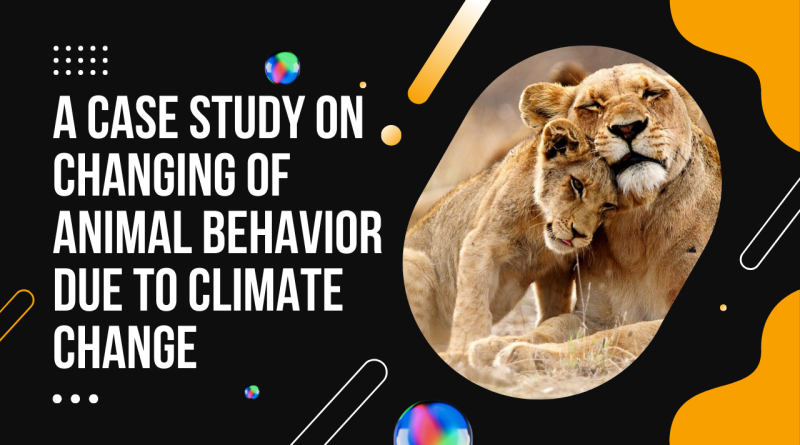A Case Study on Changing of Animal Behavior due to Climate Change
Global warming is on the rise of the average Earth’s climate system. Climate changes have been demonstrated by the direct temperature measurements. Climate change has many side effects such as regional changes, rising sea level, extreme weather, heatwaves and expansion of the desert. Basically, climate change is happening due to the side effect of a greenhouse. A greenhouse is reducing a large amount of solar radiation that is trapped in the Earth atmosphere.
Due to climate change, both animal and human being are changing their behaviors. Climate change has a major impact on the animals’ life, because, animal response to climate change in many ways such as approve, journey or expire. Species also respond to climate change, therefore, they migrate or adopt a new environment and if they don’t find a suitable environment they deceased. So, we can say that climate change effect on the life of animals and they change their behaviour such as move, adapt, acclimate or die. The most common examples can be taken from the study of reptiles, mammals, fishes and birds.
If we see the life of Polar bears and plankton, their life is also affected by climate change. Due to the heat, the sea ice is melting and affecting the wider food chain. On the other side, microscopic creatures are being eaten by fish as shrimps that were the food of seas animal. Ultimately, due to the animal behaviour changes the 70% polar bears diet is affecting and they are died due to appetite. Puffins live in the Gulf of Maine and they like to eat white hake and herring. Due to the ocean changes, the fishes are moving toward the north. Consequently, puffins are forced to eat feed their young butterfish instead of their inventive food. However, we can say that Puffins are unable to swallow them. According to the research, fledging survival rates are on the rise due to declined of fishes.
Climate change has also affected the life of Monarch butterflies and they are migrating toward cold areas. Due to the heat and warmer temperature, Monarch butterflies have delayed their migration toward southern. Columbia University’s Earth Institute explains that this is causing migrations to fall out of sync with the bloom time of the nectar-producing plants the monarchs rely on for food, contributing to the 99 diseases in the last two decades”. Leatherback turtles have also changed their behaviour due to climate change. According to the modern report of animal behaviour changes, Leatherback turtles have started their journey from nesting to feeding. After spooling their eggs on the grass, they are moving toward cooler areas.
According to the modern research by animal protection department, ‘Behavioral flexibility allows animals to rapidly cope with changing environmental conditions, and behaviour represents an important component of a species’ adaptive capacity in the face of climate change. However, there is currently a lack of knowledge about the limits or constraints on behavioural responses to changing conditions.”
Another best example of the behaviour changes due to climate change is American Pika. Basically, Pikas are limited to the moist, in the mountain and rocky habitats of western North America. Due to climate change, Pika has to adopt a different method to secure their body from hot temperatures. For example, they are making their home in the rocks and mountain instead of caches of grass. The store cache of grass can be helpful for them to protect them from cold, yet are changing their behaviour and adopting extreme winter temperature. Beaver teams have proved that climate change can create a better understanding between the animals and they can converse and manage their needs easily.
So a change in the natural environment can spoil the live so animal as well as human beings. As we know that we are also being affected by climate change. In some case, climate change is changing the behaviour of animals. Their behaviour changes can be taken in three steps changing their foods, migrating their land and moving toward death. Animal behaviour changes are not beneficial for the human being.
So, the main purpose of this case study is to provide insight information about animal behaviour change due to climate change. By taking some essential step, we can control animal disperse and adjustment. For example, mammals are also playing a vital role to signify the climate change. Climate changes have ruined the lives of the mammals because they are sanative animals. Mammals need a proper place to hide, eat, drink and breed, but unfortunately, their method is changed with the passage of time.
Author Bio:
Robert Fawl is a professional Content Writer based in London, UK. He is an author and blogger with experience in writing different academic assignments. Currently associated with Dissertation Writers UK. If you need dissertation writing services to write your dissertation, you can contact him.




